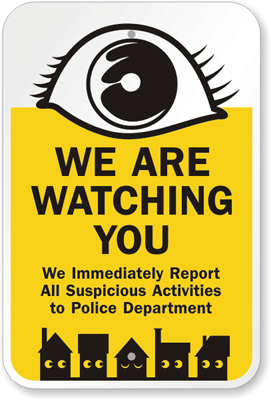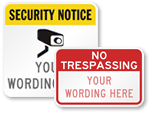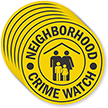‘Neighborhood watch groups are our eyes,’ police say
Lt. Michael Bernard of the Bedford Police Department in New Hampshire expressed his delight over the success of the three-year-old neighborhood watch program. Thanks to the active participation of watch groups, residential burglaries have been reduced from 45 burglaries in 2011 to 30 in 2012, with only 10 cases reported in the town this year.
Created in the late 1960s, U.S. neighborhood watch programs are one of the most effective ways of deterring crime in residential areas today. Even the police agree that asking people to participate in their own safety is a successful way to deal with residential-level crime.

Neighborhood crime watch volunteers working with police (image by West Midlands Police).
Police praise neighborhood watch groups
It’s not just Bedford; the number of home burglaries has dropped significantly in other towns as well. In Hooksett, NH, 63 residential burglaries were reported in 2010. After the establishment of a neighborhood watch program the same year, the number dropped. In 2011, there were 50 residential burglaries, and in 2012 the number sank to 40. This year there have only been 26 residential burglaries reported so far.
As more police officers recognize the value of neighborhood watch groups, more officers are becoming vocal about it. Peter Bartlett, the Hooksett Police Chief, said: “Neighborhood watch groups are always a plus for any agency. They provide another level of eyes and ears for the department and helps prevent or solve criminal activity.”
“It definitely makes a difference in the town. Burglaries are way down,” said Ken Geddes of Auburn’s neighborhood watch group. Supporting Geddes claim, Auburn Police Captain Gary Bartis said, “I think it is a valuable tool every police department should have. We can’t cover every inch of town. (The watch groups) are our eyes.”

View this sign here.
Citizens are keen to report suspicious activity in their neighborhood, which is what makes a neighborhood watch program so successful. It’s more than just a patrol though; it’s a network of residents that stays in contact and informs about the issues of neighborhood.
Misconceptions of the neighborhood watch
There is a general misconception that neighborhood watch group members need to patrol all day and night to nab criminals. On the contrary: “basically, it (neighborhood watch) is about sharing information and educating our members. We want to keep everyone informed. If you see something, say something, maybe even get a license plate number,” Geddes says.
It is also important that members know when to step back. Police remind neighborhood watch program members not to take the law into their own hands and to avoid confrontation with the suspect. The police in Kennewick, Washington say that volunteers should watch out for criminal activity in their streets, but leave the active police work to officers. NBC reports, “Police encourage neighbors to have a neighborhood watch group and even provide informational sessions to people about how to participate. But they want people to call them to handle any situations that require contacting a suspicious person.”
Benefits of neighborhood watch programs
1. Reduce crime: Neighborhood watch programs really help deter burglaries, vandalism, and other illegal activities in a community.
2. Bring communities together: Crime watch programs are an effective means of creating neighborhood cohesiveness. They help form strong bonds between neighbors who become more concerned about one another’s well being.
3. Reduce the gap between residents and local law enforcement: Neighborhood watch groups maintain a close working relationship with local law enforcement. The programs create a smooth flow of information between police and citizens. Residents become more aware while the police get accurate information for identifying suspects.
Category: Neighborhood Watch, Surveillance

















